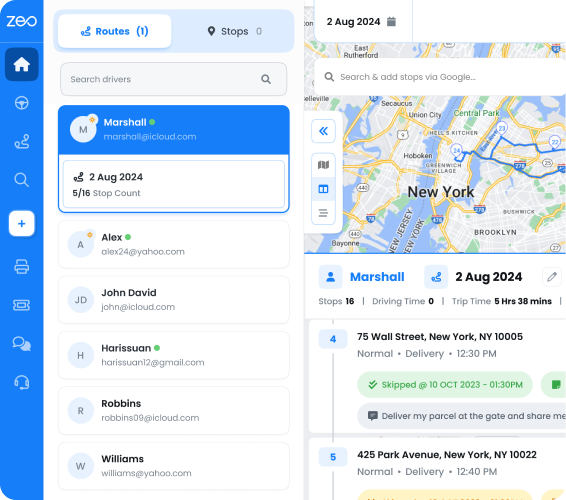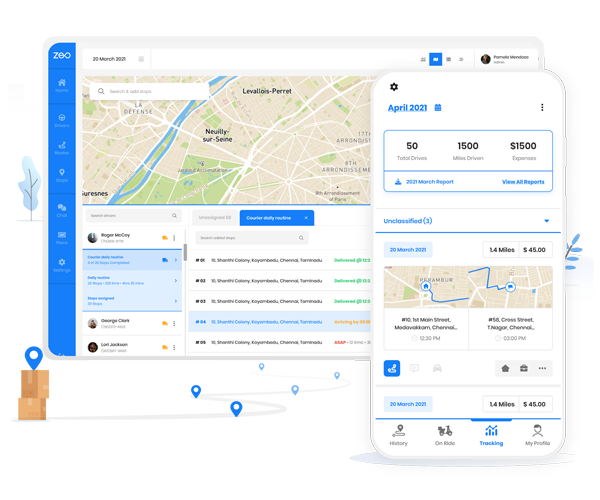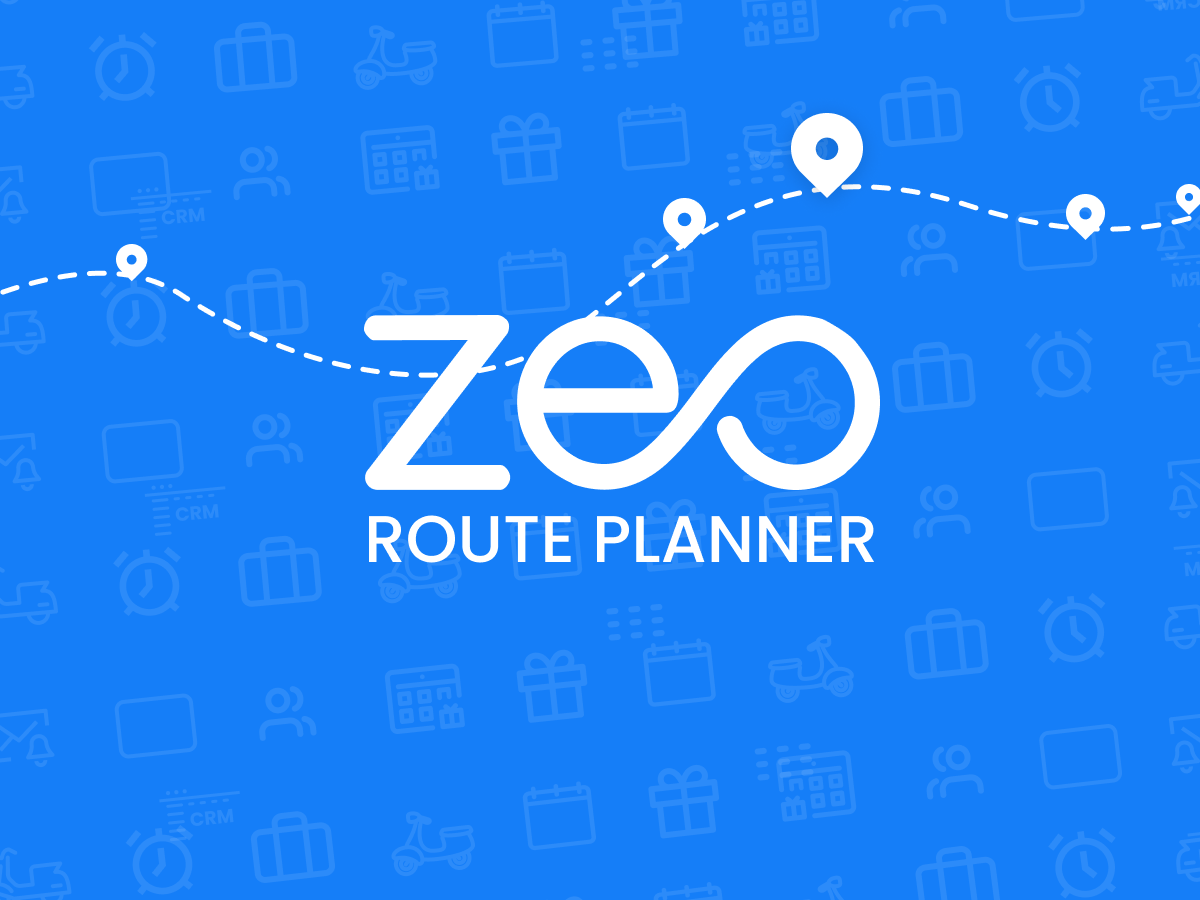In today’s fast-paced world, on-demand deliveries have revolutionized how goods and services are delivered to customers. From food delivery to e-commerce packages, on-demand services have become integral to our lives. However, running a successful on-demand delivery business comes with its own set of challenges.
In this blog, we will explore the primary types of on-demand deliveries, discuss the top five challenges faced by on-demand delivery businesses, and provide strategies to overcome them. Additionally, we will highlight the role of Zeo Route Planner in optimizing delivery operations.
What are the Primary Types of On-Demand Deliveries?
On-demand deliveries can be broadly categorized into two primary types: consumer-focused and business-focused. Consumer-focused on-demand deliveries cater to individual customers and include food delivery, grocery delivery, ride-hailing services, and courier services for individuals. Business-focused on-demand deliveries involve transporting goods between businesses and encompass services such as logistics and supply chain management.
What are the Top 5 Challenges Faced by On-Demand Delivery Businesses?
The fast-paced nature of on-demand delivery services creates various challenges that must be overcome to run the business efficiently. Let us review the top 5 challenges you will likely face in an on-demand delivery business.
- Volume & Time Frames: One of the most significant challenges faced by on-demand delivery businesses is managing a high volume of orders within tight time frames. As customer expectations for fast delivery continue to rise, businesses must ensure they can handle the demand and deliver within the promised time. This challenge requires careful planning, efficient resource allocation, and effective coordination between various stakeholders involved in the delivery process.
- Functionality & KPIs: Maintaining optimal functionality and meeting key performance indicators (KPIs) is crucial for on-demand delivery businesses. This includes order accuracy, delivery speed, and customer satisfaction. Ensuring that the delivery process is streamlined and efficient is essential to meet these KPIs consistently.
- Delivery Management: Efficient delivery management is a critical challenge for on-demand delivery businesses. This involves assigning drivers to orders, optimizing routes, and tracking real-time deliveries. Managing a fleet of drivers and coordinating their schedules to ensure timely deliveries can be complex. Businesses need to invest in robust delivery management systems that offer features like route optimization, driver tracking, and seamless integration with other business processes to overcome this challenge effectively.
- Automation & Efficiency: Automation plays a vital role in improving the efficiency of on-demand delivery operations. Automating processes such as order processing, dispatching, and route optimization can significantly reduce manual efforts and streamline operations. However, implementing and integrating automation systems can pose its own set of challenges. On-demand delivery businesses must carefully evaluate their requirements, choose suitable automation tools, and ensure smooth integration with existing systems to maximize efficiency and minimize errors.
- Cost Management: Maintaining profitability while offering competitive pricing is a common challenge for on-demand delivery businesses. Balancing the costs of vehicle maintenance, fuel, driver wages, and other overhead expenses is essential to ensure a sustainable business model. Effective cost management involves optimizing routes, minimizing idle time, and leveraging data-driven insights to make informed decisions.
Read more: How to Choose the Right Delivery Management Software.
Top 7 Strategies to Successfully Run an On-Demand Delivery Business
Strategies are crucial to run any kind of business. With the right strategies, a business can optimize its operations to make the most ROI and satisfy customers. Let us go through the 7 strategies that you can use to run an on-demand delivery company successfully:
- Precise Quotation & Scheduling: Providing accurate quotations and realistic delivery time frames helps customers manage their expectations effectively. Advanced routing and scheduling tools can optimize delivery routes and improve efficiency, leading to better cost management and customer satisfaction. Businesses can provide precise quotations and set achievable delivery schedules by considering factors such as traffic conditions, driver availability, and delivery distances.
- Last-Mile Coordination & Flexibility: The last mile of delivery is often the most critical and challenging part. Ensuring seamless coordination between drivers, customers, and the delivery team is essential to meet time-sensitive requirements. Building flexibility into the delivery process enables adjustments to unforeseen circumstances, such as traffic congestion or customer availability.
- Third-Party Delivery Company Integration: Collaborating with third-party delivery companies can expand the reach and capabilities of on-demand delivery businesses. Partnering with established logistics providers allows access to their network and expertise, ensuring a wider coverage area and faster deliveries. Integrating with third-party delivery platforms simplifies managing multiple delivery channels and enables businesses to leverage each provider’s strengths, ultimately benefiting the customers.
- Automation of Operations: Leveraging technology and automation systems can streamline operations and improve efficiency. Automated order processing, route optimization, and real-time tracking of deliveries reduce manual errors, enhance productivity, and optimize resource allocation. By implementing suitable software solutions and leveraging emerging technologies like artificial intelligence and machine learning, businesses can automate routine tasks, eliminate bottlenecks, and drive operational efficiency.
- Regional Fulfillment: Establishing regional fulfillment centers strategically located near target customer clusters can significantly reduce delivery time and costs. By decentralizing operations, businesses can improve their responsiveness and provide faster service to customers in specific regions. Regional fulfillment centers also facilitate better inventory management, reduce shipping distances, and allow businesses to optimize their delivery networks based on local demand patterns.
- Utilization of Driver Data: Collecting and analyzing driver data can offer valuable insights into driver performance, route efficiency, and customer preferences. This data can help optimize routes, enhance driver training, and improve service quality.
- Real-Time Customer Communications: Keeping customers informed and engaged throughout the delivery process is crucial for a positive customer experience. Providing real-time updates, delivery notifications, and options for customer feedback can build trust and loyalty. Moreover, regular communication allows businesses to gather valuable feedback and improve delivery processes.

increase fuel savings
Save 2 Hours on Deliveries, Everyday!
Optimize routes with our algorithm, reducing travel time and costs efficiently.
Get Started for Free
Read more: All You Need to Know About Distribution Centers.
Optimize On-Demand Deliveries with Zeo
The art of fulfilling on-demand deliveries requires careful planning, efficient operations, and effective use of technology. By implementing the above-mentioned strategies and leveraging tools like Zeo Route Planner, on-demand delivery businesses can navigate their challenges and succeed in this dynamic industry.
Zeo offers advanced routing and scheduling capabilities, fleet management, real-time tracking, and driver analytics—empowering businesses to optimize their delivery operations and provide exceptional customer service.
With the right strategies and tools, on-demand delivery businesses can deliver on their promises and exceed customer expectations in the ever-evolving world of on-demand services.
Looking forward to exploring Zeo? Book a free demo today!

Are you a fleet owner?
Want to manage your drivers and deliveries easily?
Grow your business effortlessly with Zeo Routes Planner – optimize routes and manage multiple drivers with ease.

increase fuel savings
Save $200 on fuel, Monthly!
Optimize routes with our algorithm, reducing travel time and costs efficiently.
Get Started for Free























